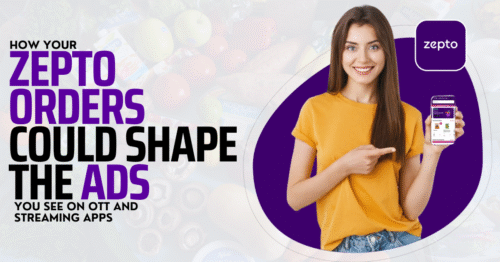Picture this: it’s pouring outside, your fridge is emptier than your motivation, and your stomach growls like a disgruntled tiger. You reach for your phone, tap a few buttons, and voilà—piping hot biryani arrives at your doorstep. That, my friend, is not magic. It’s Swiggy’s hyperlocal agility at work.
But how did this once-humble food delivery startup rise to become the reigning monarch of Indian mealtimes?
Let’s unpack the story of Swiggy—the startup that made hunger its business and mastered the logistics dance better than any dabbawala ever could.
The Swiggy Genesis: From Potholes to Palates
Founded in 2014 by Sriharsha Majety, Nandan Reddy, and Rahul Jaimini, Swiggy started with a simple goal: deliver food quickly, reliably, and without calling the restaurant or the delivery guy five times.
At the time, competitors relied heavily on third-party delivery fleets or restaurant coordination. But Swiggy? They built their own fleet-first model—a bold bet that’s now become their secret sauce.
> “Swiggy didn’t just deliver food. They delivered control over the delivery experience.”
Hyperlocal Agility: The X-Factor
What is Hyperlocal Agility?
Hyperlocal agility is the ability to understand, respond, and adapt to the specific needs of a defined neighborhood or zone. It’s like knowing that Sector 56 in Gurgaon hates pineapple on pizza and prefers momo stands to gourmet burgers—then delivering accordingly.
For Swiggy, hyperlocal agility came alive in three ways:
- Granular Demand Mapping – Learning which cuisines were in demand at what time, zone by zone.
- Dynamic Delivery Allocation – Matching orders with the nearest, fastest, most efficient delivery partners.
- Restaurant Partner Onboarding – Onboarding smaller, regional restaurants that others ignored, building local trust and loyalty.
That’s how Swiggy made even lesser-known eateries the stars of your midnight cravings.
The Swiggy Playbook: Move Fast, Optimize Everything
1. Fleet Power: Swiggy’s Army of Everyday Heroes
Swiggy invested in its delivery fleet like a tech company would invest in servers. Real-time tracking, route optimization, training, incentives, and performance dashboards—all to create a hyper-efficient, hyperlocal army that could dodge traffic jams like a superhero on a scooty.
They didn’t just build a delivery team. They built a logistics empire.
2. Data Intelligence: A Nerd’s Paradise
Every tap, every rating, every delay—it’s data. Swiggy’s tech stack processed these data points into actionable insights:
- Predictive order volumes
- Restaurant preparation times
- Custom menus based on area-specific demand
It was as if they had a sixth sense for what you’d crave on a rainy Wednesday at 4 p.m.
3. Micro-Zoning: Big Impact, Small Radius
Instead of trying to dominate entire cities, Swiggy broke metros into micro-zones and built strategies per patch. More like local legends than a national giant.
> “Why target Bangalore when you can own Indiranagar?” That kind of thinking.
Result? Lower delivery times, higher order frequency, and—you guessed it—happier tummies.
India-Specific Superpowers
While global giants fumbled in understanding Indian chaos, Swiggy thrived because it knew:
- Traffic here isn’t a bug, it’s a feature. So they optimized deliveries accordingly.
- Local cuisine matters. No “California Rolls” in Kolkata unless they’re asking for a lawsuit.
- Trust trumps discounts. People want food fast and fresh—not just cheap.
Swiggy leaned into India’s complexities instead of fighting them. That’s agility, desi-style.
Pivot Like a Pro: Cloud Kitchens, Instamart, and Genie
Swiggy didn’t just stop at food. They danced their way into:
- Cloud Kitchens: Launched “Swiggy Access” to let restaurant partners operate kitchens in high-demand zones without expensive real estate.
- Swiggy Instamart: Essentials in 15 minutes. Milk, Maggi, maybe even that toothpaste you forgot for two weeks.
- Swiggy Genie: Your personal delivery assistant. Want to send a tiffin box to grandma or pick up dry cleaning? Done.
Each pivot wasn’t random. It was rooted in hyperlocal demand data. Swiggy wasn’t guessing—it was listening.
COVID & Comebacks: Resilience in a Ration Card World
When the pandemic hit, the food delivery industry stumbled. But Swiggy… it did the one thing that had always worked—pivot fast.
- Delivered essentials
- Partnered with hospitals
- Supported delivery partners with health insurance and safety kits
It didn’t just survive. It earned trust.
And when the storm passed, Swiggy came out leaner, faster, and even more beloved.
Lessons from Swiggy’s Hyperlocal Dominance
1. Start Small, Scale Smart
Swiggy wasn’t trying to win India overnight. It won one neighborhood at a time. That precision gave them depth, not just breadth.
2. Own the Experience
From app design to delivery bags, they obsessed over consistency. No ‘chalta hai’ attitude—just seamless execution.
3. Feedback is Fuel
User feedback was devoured like an evening samosa. Constant tweaking based on real opinions kept them ahead of the curve (and the complaints).
4. Humanize the Hustle
Swiggy’s campaigns, delivery partner stories, and social media voice all hit a common chord: relatability.
They weren’t just delivering food—they were delivering comfort, routine, and a slice of modern Indian life.
So… What’s Cooking Next?
With drone deliveries on the horizon, a deeper dive into AI-powered logistics, and global eyes watching their playbook, Swiggy isn’t just a food delivery app anymore.
It’s a hyperlocal ecosystem—a masterclass in how to win hearts (and stomachs) one bite-sized decision at a time.
Final Byte: Next time your butter chicken shows up before you can finish one reel on Instagram, tip your helmet to Swiggy—the brand that made hyperlocal feel hyper personal.
Follow Us | Our Services | Contact Us







